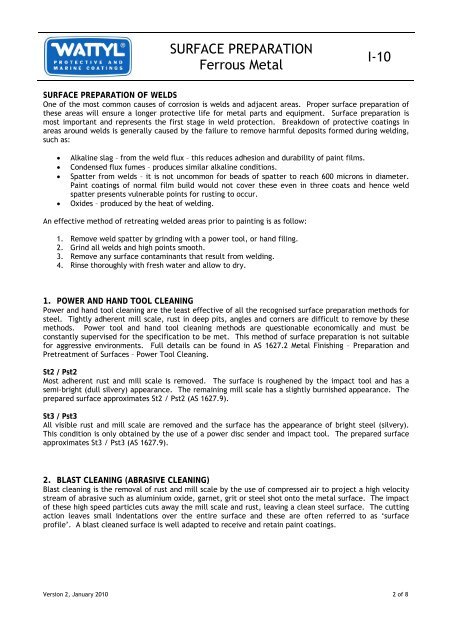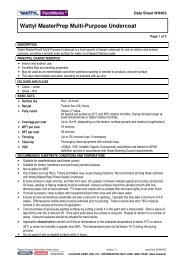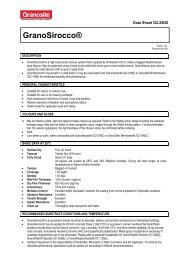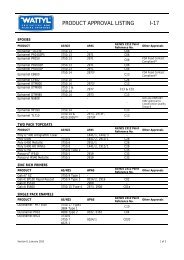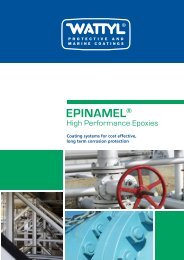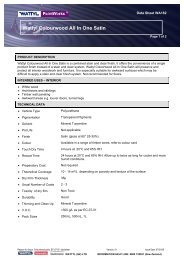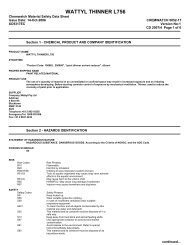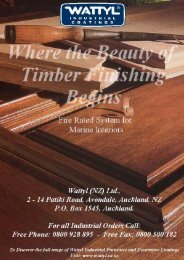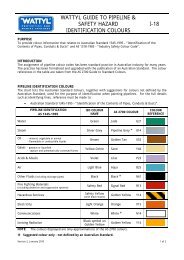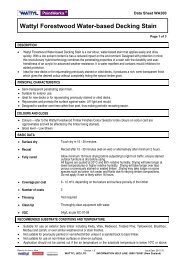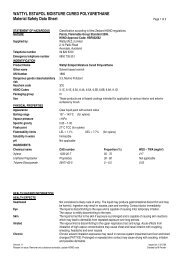Surface Preparation - Ferrous Metals - Wattyl Web Customer Service
Surface Preparation - Ferrous Metals - Wattyl Web Customer Service
Surface Preparation - Ferrous Metals - Wattyl Web Customer Service
Create successful ePaper yourself
Turn your PDF publications into a flip-book with our unique Google optimized e-Paper software.
SURFACE PREPARATION<strong>Ferrous</strong> MetalI-10SURFACE PREPARATION OF WELDSOne of the most common causes of corrosion is welds and adjacent areas. Proper surface preparation ofthese areas will ensure a longer protective life for metal parts and equipment. <strong>Surface</strong> preparation ismost important and represents the first stage in weld protection. Breakdown of protective coatings inareas around welds is generally caused by the failure to remove harmful deposits formed during welding,such as:• Alkaline slag – from the weld flux – this reduces adhesion and durability of paint films.• Condensed flux fumes – produces similar alkaline conditions.• Spatter from welds – it is not uncommon for beads of spatter to reach 600 microns in diameter.Paint coatings of normal film build would not cover these even in three coats and hence weldspatter presents vulnerable points for rusting to occur.• Oxides – produced by the heat of welding.An effective method of retreating welded areas prior to painting is as follow:1. Remove weld spatter by grinding with a power tool, or hand filing.2. Grind all welds and high points smooth.3. Remove any surface contaminants that result from welding.4. Rinse thoroughly with fresh water and allow to dry.1. POWER AND HAND TOOL CLEANINGPower and hand tool cleaning are the least effective of all the recognised surface preparation methods forsteel. Tightly adherent mill scale, rust in deep pits, angles and corners are difficult to remove by thesemethods. Power tool and hand tool cleaning methods are questionable economically and must beconstantly supervised for the specification to be met. This method of surface preparation is not suitablefor aggressive environments. Full details can be found in AS 1627.2 Metal Finishing – <strong>Preparation</strong> andPretreatment of <strong>Surface</strong>s – Power Tool Cleaning.St2 / Pst2Most adherent rust and mill scale is removed. The surface is roughened by the impact tool and has asemi-bright (dull silvery) appearance. The remaining mill scale has a slightly burnished appearance. Theprepared surface approximates St2 / Pst2 (AS 1627.9).St3 / Pst3All visible rust and mill scale are removed and the surface has the appearance of bright steel (silvery).This condition is only obtained by the use of a power disc sender and impact tool. The prepared surfaceapproximates St3 / Pst3 (AS 1627.9).2. BLAST CLEANING (ABRASIVE CLEANING)Blast cleaning is the removal of rust and mill scale by the use of compressed air to project a high velocitystream of abrasive such as aluminium oxide, garnet, grit or steel shot onto the metal surface. The impactof these high speed particles cuts away the mill scale and rust, leaving a clean steel surface. The cuttingaction leaves small indentations over the entire surface and these are often referred to as ‘surfaceprofile’. A blast cleaned surface is well adapted to receive and retain paint coatings.Version 2, January 2010 2 of 8


